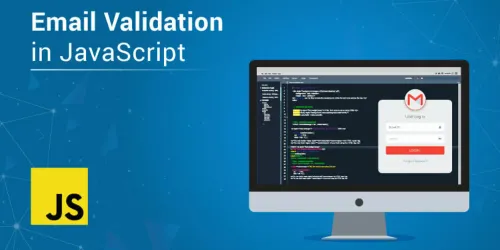In the realm of web development, data validation is the cornerstone of robust and reliable applications. Among the most critical pieces of data to validate is the email address. Whether you are building a simple contact form or a sophisticated registration system, ensuring that the email addresses your application collects are valid is paramount. In this comprehensive guide, I, an expert in JavaScript email validation, will take you on a journey through the art and science of perfect email validation in JavaScript.
The Significance of Email Validation
Before we delve into the intricacies of JavaScript email validation, let's grasp why it's so essential. Email addresses serve as the gateway for communication and authentication in the digital world. Validating email addresses is not just about data accuracy; it's also about user experience. When users receive immediate feedback about an invalid email address, it enhances their interaction with your application and reduces frustration.
Basic JavaScript Email Validation
We'll start our journey with the fundamentals. To perform email validation in JavaScript, you can use regular expressions or built-in functions. Let's explore both methods.
1. Regular Expressions
Regular expressions (regex) are powerful tools for pattern matching. You can use a regex pattern to validate email addresses effectively. Here's a simple example:
function validateEmail(email) {
const regex = /^[a-zA-Z0-9._-]+@[a-zA-Z0-9.-]+\.[a-zA-Z]{2,4}$/;
return regex.test(email);
}
In this example, we use a regex pattern that checks if an email address consists of valid characters and follows the common "[email protected]" format. While this approach is functional, it may not cover all edge cases, and regex can be challenging to read and maintain for complex validations.
2. Built-in Functions
JavaScript provides a built-in method for basic email validation: RegExp.prototype.test(). Here's how you can use it:
function validateEmail(email) {
const regex = /^[a-zA-Z0-9._-]+@[a-zA-Z0-9.-]+\.[a-zA-Z]{2,4}$/;
return regex.test(email);
}
This method is concise and readable, making it suitable for straightforward email validation tasks. However, it still has limitations when dealing with complex email address patterns.
Advanced JavaScript Email Validation Techniques
While basic email validation is a great starting point, there are more advanced techniques and scenarios you may encounter in real-world applications. Let's explore some of these scenarios and how to tackle them expertly.
1. Real-Time Validation
Real-time validation provides immediate feedback to users as they type in an email address. To implement this, you can listen to the input event and validate the email address dynamically. This enhances the user experience by catching errors as they occur.
2. Server-Side Validation
Client-side validation is valuable for improving user experience, but it should be complemented with server-side validation. This is crucial for security and data integrity. Always assume that malicious users can bypass client-side validation and submit invalid data to your server.
3. Library Solutions
While building your validation functions is educational, there are also libraries available that can simplify the process. Libraries like validator.js provide a comprehensive set of validation functions, including email validation.
4. Displaying Validation Errors
The way you display validation errors to users can significantly impact their experience. You can use tooltips, error messages, or even visual cues like color changes to indicate whether an email address is valid or not.
Common Questions about JavaScript Email Validation
Now that we've explored the fundamentals and advanced techniques of email validation in JavaScript, let's address some common questions that developers often encounter when working with this crucial aspect of web development.
1. Is client-side email validation enough?
Client-side email validation is an excellent practice for enhancing user experience, but it should never be the sole method of validation. Always implement server-side validation to ensure data integrity and security.
2. What's the best regex pattern for email validation?
There is no one-size-fits-all regex pattern for email validation. The pattern you choose depends on your specific requirements and the level of validation you need. The example provided earlier is a basic one; for more robust validation, consider using established libraries.
3. How can I implement real-time email validation in my web form?
To implement real-time email validation, you can use JavaScript event listeners to track changes in the email input field and validate the input as the user types. This provides immediate feedback and enhances user experience.
4. Are there any security concerns with email validation?
While email validation itself is not a security concern, it's essential to ensure that your application's email handling processes are secure. Be cautious of email injection attacks and always sanitize and validate email inputs before using them in your application.
Conclusion
Mastering JavaScript email validation is a critical skill for any web developer. It not only ensures the accuracy of data collected through your forms but also enhances the user experience and protects your application from faulty inputs.
In this ultimate guide, we've covered the basics of JavaScript email validation, explored advanced validation techniques, and addressed common questions. With this knowledge, you're well-equipped to create web forms that collect accurate email data, improve user satisfaction, and secure your application against malicious inputs.
So, go ahead and apply these expert techniques to perfect your email validation in JavaScript, and watch as your web forms become more robust and user-friendly. Happy coding!



